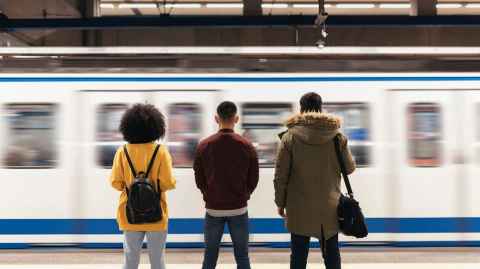Your public transport, your future
7 June 2024
Public transport isn’t just something people use when they can’t drive or won’t drive; it’s a lifeline for a massive part of our population.

Public transport is far more than a tool to get people to work and back – though policymakers and those who have a deeply entrenched commitment to driving see it as a less desirable mode of transport. For decades, public transport has been seen as a mere ‘alternative’ to driving. As a result, it has suffered from a decline in funding and fewer people using it than advocates of public transport have hoped.
The recent erosion in funding for public transport services, including the loss of half-price fares for everyone, free fares for children under 13, half-price fares for youth under 25, and large cuts to the Community Connect programme (a targeted package aimed at making public transport more affordable) has more of an impact beyond a person’s ability to get from A to B.
Half-price fares were meaningful for families struggling with the cost of living. As nearly everything has increased over the past few years, cheap public transport meant families could significantly reduce costs by leaving a car at home or not getting one. That was a huge boon, especially to lower-income groups, where the estimated cost of car ownership is well over $5000 a year, excluding the price of the car itself.
Many families relied on free or low-cost fares to get their children to school daily, so another unnecessary barrier to quality education access was erected when public transport became less affordable.
Policymakers’ overuse of adjectives and grandiose language often obscures the real impact of these decisions ... We must look beyond the flashy language and assess the real benefits and costs of transport policies.
In March 2024, the coalition Government released its Government Policy Statement (GPS) on land transport, which outlines what the Government plans to do with transportation for the next 10 years. That GPS is a throwback to the 1950s and 60s car-crazy culture of massive road building and highway spending, almost to the exclusion of anything else. It includes the deletion of crucial light rail plans, rail expansion, and an explicit defunding of walking and cycling infrastructure.
But the GPS isn’t the final word. Each region is required to develop a Regional Land Transport Plan (RLTP) that will feed into the GPS. While that plan ‘should’ enable the ideas of the GPS, everyone gets to have a say on what Auckland Transport’s priorities will be for the next 10 years.
Given that 10-year horizon, I would urge all young people to add their thoughts on the RLTP, as they have lost the most this year, and will be the most impacted by our plans for the next decade.
Public consultation for the RLTP is open through to June 17, after which Auckland Transport will create its final submission on August 1. Providing feedback on the RLTP takes only a few minutes of your day but will potentially impact your life for years.
Auckland Transport has prioritised a transport system that is fast and connected, resilient, productive, safe, and sustainable. This is a good start, but the RLTP makes no mention of being more inclusive so that everyone has access to our transport system, more equitable so those with less means have an equal opportunity to participate in the economy, or more affordable, so families don’t need to make sacrifices just to get to work, school, and buy groceries. Having your say on the RLTP also enables everyone to send to AT their priorities so that our local transport agency knows what is essential to those who travel the roads, ride the buses, and walk or cycle the streets.
Also at stake in the RLTP are plans to develop the once-defunct Roads of National Significance (RoNS), a plan to build new highways that will lock in car dependence for decades. It has been argued that these will ‘boost the standard of living’, but they will certainly also come at the cost of investment in the infrastructure in our neighbourhoods and cities.
The policymakers’ overuse of adjectives and grandiose language often obscures the real impact of these decisions. Instead, highway projects are described, by Transport Minister Simeon Brown as “world-class roads” or “transformational projects to connect our regions and unlock the potential”, masking the fact that they may not be in the best interests of the wider community, will induce more vehicle travel, and will cost far more than the tens of billions already estimated.
We must look beyond the flashy language and assess the real benefits and costs of transport policies. We must advocate for a balanced approach prioritising sustainable and inclusive transport solutions over car-centric developments. The decisions made today regarding public transport funding and infrastructure will shape our cities’ future and countless individuals’ daily lives.
It’s essential for all of us, especially the youth, to engage in this process and voice our priorities. Only through active participation can we ensure that our transport systems are equitable, inclusive, and sustainable for future generations. Don’t take the chance to have your say for granted – just do it.
This article reflects the opinion of the author and not necessarily the views of Waipapa Taumata Rau University of Auckland.
Dr Timothy F. Welch is a Senior Lecturer in the School of Architecture and Planning
This article was first published on Newsroom, Your public transport, your future, 7 June, 2024
Media contact
Margo White I Research communications editor
Mob 021 926 408
Email margo.white@auckland.ac.nz